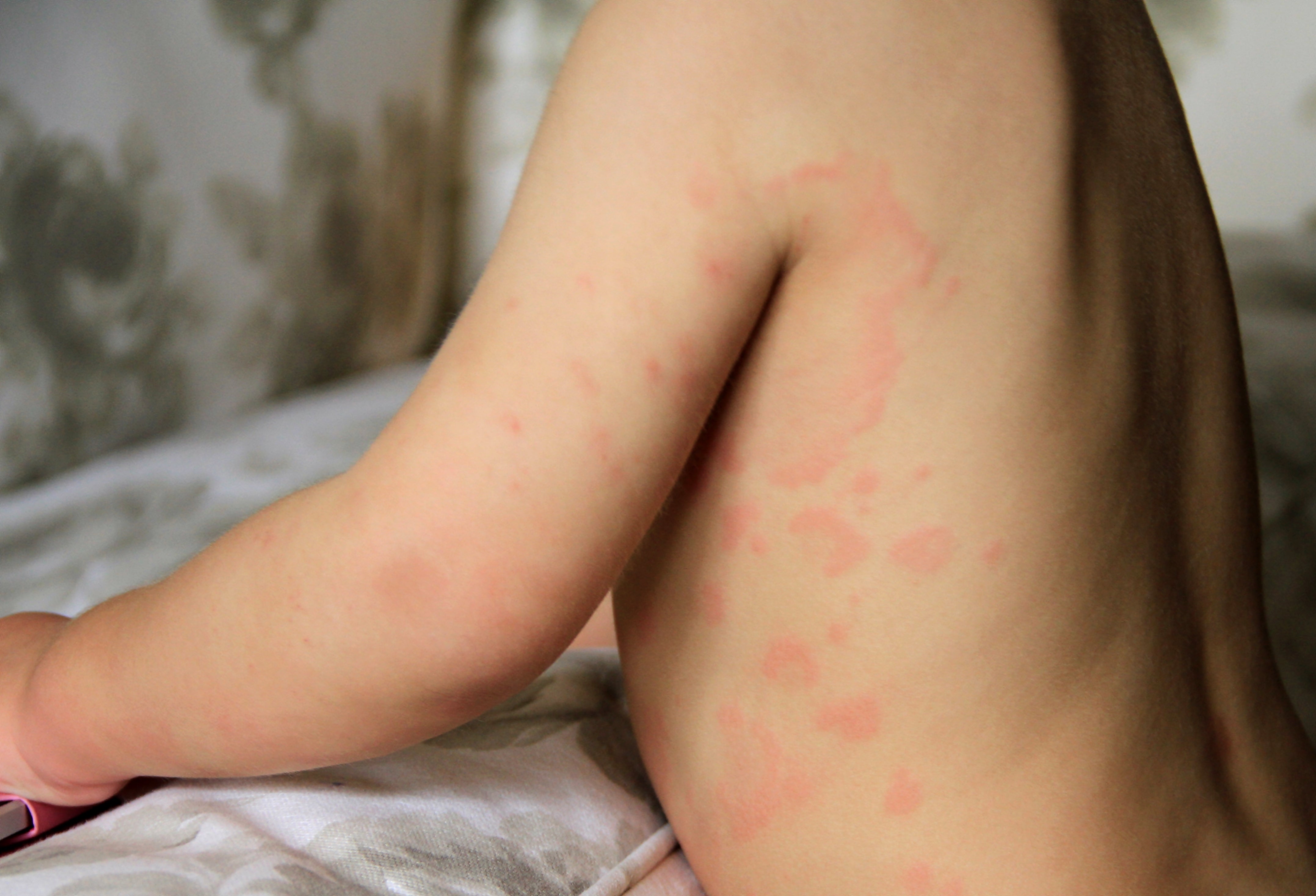Pollen, food choices, dust, harsh chemicals, and fabrics — these are just some of the triggers that can cause allergic reactions in susceptible people. While allergic conditions seem more rampant in young groups, the symptoms they have can still progress over the years, affecting different age groups.
An allergic reaction is an immune system response to a substance that the body previously mistook as something harmful. The John Hopkins Medicine explained that the immune system of a susceptible person treats normally harmless substances as threats, dealing histamines to defend the body against them.
The release of histamine, including massive amounts of other chemicals, triggers a "cascade of symptoms that can affect the respiratory system, the gastrointestinal tract, the skin, and the cardiovascular system." For infants and young children with sensitivities, allergic reactions occur as atopic dermatitis (eczema) or as food allergies.
VerywellHealth reported that children with eczema are "at increased risk of developing allergies and asthma,” likely occurring in the toddler years to school-age. "This pattern of progression from one form of allergic disease to another is referred to as the atopic march," the health website said.
WHAT'S THE ATOPIC MARCH?
Photo from Allergy & Asthma Network (A&AN)
Commonly known as the Allergic March, Atopic March refers to the natural development of allergic conditions that often begin in early life and progress to adulthood. According to Allergy & Asthma Network (A&AN), "about 50 percent of children with eczema develop asthma and 33 percent develop food allergies."
"Children with eczema are also at higher risk of developing allergic rhinitis. Food allergies in childhood are also a risk factor for allergic rhinitis and asthma," said the A&AN, sharing that the 4 main allergic conditions are eczema, food allergies, allergic rhinitis, and asthma.
ECZEMA (Atopic Dermatitis)

For many children, the so-called atopic march starts with the onset of an itchy skin condition called eczema. Also known as atopic dermatitis, eczema often develops in the first six (6) months of life.
The American Academy of Allergy Asthma & Immunology (AAAAI) explained that eczema is the most common skin condition for children. This allergic condition, characterized by red, dry, and itchy skin rashes, typically affects 1 in every 5 infants and 1 in every 50 adults.
VerywellHealth clarified that the rashes in infants and young children can be found in areas that tend to be dry such as cheeks, chest, trunk, back of the scalp, arms, and even legs. They explained that the "leakiness" of the skin barrier causes the gentle skin of infants to dry out and become susceptible to irritation and inflammation.
While A&AN stated that eczema serves as "the first site where allergies make an impact," the allergens present in the environment also play a role, including food allergens. Meanwhile, the AAAAI emphasized that some children at an early age develop food sensitivity that can make eczema symptoms worse.
FOOD ALLERGIES

Infants and young children usually develop food allergies after the introduction of solid foods.
According to VerywellHealth, almost all children who have food allergies deal with some form of skin symptoms, such as hives and swelling, after eating and swallowing the potential allergen. "These symptoms typically occur within a few minutes of eating the food in question, although can be delayed up to a couple of hours," said the health website.
Aside from the skin symptoms, food allergies in young children may also cause nausea, vomiting, stomach aches, diarrhea, breathing difficulties (asthma symptoms), runny nose, sneezing, and lightheadedness. In some life-threatening cases, anaphylaxis can happen, which is a severe allergic reaction that requires immediate medical attention.
Food allergies are common in families who have other allergic conditions such as asthma, eczema, and allergic rhinitis of hay fever. People rarely have an allergic reaction to fruit, vegetables, and allergies, but the Top 8 causes of food allergies as reported by the A&AN are peanut, tree, nut, cow's milk, egg, wheat, soy, fish, and shellfish.
NASAL ALLERGIES

Having atopic dermatitis and food allergies in childhood is also a risk factor for nasal allergies. Also known as hay fever, allergic rhinitis occurs in more than 50% of those children with eczema.
The immune system of a person who has allergic rhinitis mistakenly single out a substance as an intruder, identifying the material as an allergen despite it being harmless to most people. The immune system then fends off the allergen by releasing histamine and chemical mediators, causing symptoms in the nose, throat, eyes, ears, skin, and roof of the mouth.
While most children experience the symptoms of hay fever after grade school age, others develop it sooner, dealing with sneezing, runny nose, itchy nose, nasal congestion, post-nasal drip, allergic shiners, and itchy eyes.
These symptoms may occur year-round since they can be just triggered by exposure to common indoor allergens like dried skin flakes, urine, pet dander, mold, droppings from dust mites, and other environmental factors like smoke, pollen, strong odors, changes in the temperature, or humidity of the air.
ASTHMA

Despite eczema being the most common allergic condition for infants, children, on the other hand, are normally affected by asthma. Described as being the most chronic disease in children, asthma, which may happen at any age, occurs in about 8% of all people.
"The majority of cases of asthma are due to allergies. In fact, between 15% and 38% of children with allergic rhinitis will develop asthma," said the health news site in an article, emphasizing that the lung condition can be most often seen in males in pre-teen years and in females during teenage years.
When you have asthma attacks, the airways of your lungs become narrow and start to swell, producing extra mucus that can make breathing difficult. While the symptoms vary from one person to another, people with asthma often deal with shortness of breath, chest tightness, wheezing, trouble sleeping, or coughing.
For some people, asthma flares up in certain situations in three ways as reported by Mayo Clinic:
- Exercise-induced asthma: occurs when the air is cold and dry
- Occupational asthma: starts from the workplace due to chemical fumes, gasses or dust
- Allergy-induced asthma: happens due to airborne substances, such as pollen, mold spores, cockroach waste, or particles of skin, and dried saliva shed by pets
WHAT TO DO IF YOUR CHILD HAS ALLERGIES
If you think your child is experiencing or has experienced any symptoms from the 4 allergic conditions, please visit your child's doctor to confirm if they may have allergies. Proper diagnosis from an allergist or an immunologist is needed for specialized allergy testing and treatment, especially if they have food allergies and asthma.
For allergic rhinitis, try to reduce your exposure to the allergen to avoid triggering the condition. You may also purchase over-the-counter medicines, such as antihistamines or corticosteroids, from pharmacies. If symptoms still persist after self-medication and other add-on treatments, seek a specialist for further assessment.
For eczema, the most useful way to treat them is to use moisturizers and topical ointments to reduce irritation and inflammation. The AAAAI clarified that antihistamines will not work to relieve eczema flare-ups and emphasized that oral steroids should also be avoided.
Here at Cottonique, we believe that 100% organic cotton undergarments and clothes protect the wearer best against skin allergies, like eczema, allergic contact dermatitis, urticaria, angioedema, and others.
Experience tells us that we should avoid a certain substance after experiencing a flare-up. That's why there's a need to always be on the lookout for potential triggers that may cause irritation. If you're keen on avoiding triggers and removing allergens from your lifestyle, start by filling your wardrobe with our allergy-free organic cotton clothing.
The avoidance of all potential irritants and allergens remains the best way to keep your skin from becoming itchy and irritated. For uncompromising prevention of severe allergies and multiple chemical sensitivities, visit our Allergic Contact Dermatitis collection — completely free from harmful allergens, elastics, chemicals, and dyes.
To find out more information about Allergic March, you may visit this informative resource from Allergy & Asthma Network. You may also read our previous blog: Allergy-Free Wardrobe Guide: 4 Factors To Consider When Buying Eczema-Friendly Clothes.
DISCLAIMER: The information presented on Cottonique is not, and will never be, intended to be a substitute for professional medical advice, diagnosis, or treatment. All content materials found on this site, from text, treatments, outcomes, charts, graphics, photographs, and study findings, are created and published for general informational purposes only. It should not, in any way, be construed as a standard of care to be followed by a user of the website.
Thus, readers are encouraged to verify any information obtained from this website with other accurate references and review all information regarding any medical condition or treatment with their physician. As Cottonique strives to help those with allergies live with better days, the hypoallergenic apparel brand encourages everyone to always seek the advice of their physician or other qualified health providers with any questions they may have regarding a medical condition.







Leave a comment
This site is protected by hCaptcha and the hCaptcha Privacy Policy and Terms of Service apply.